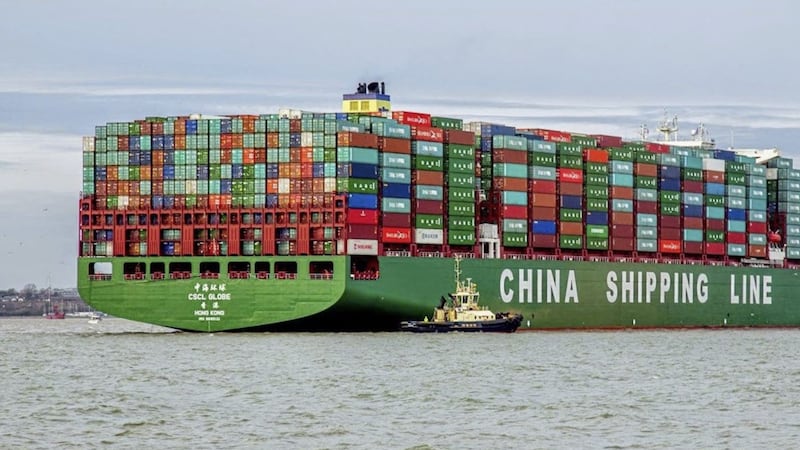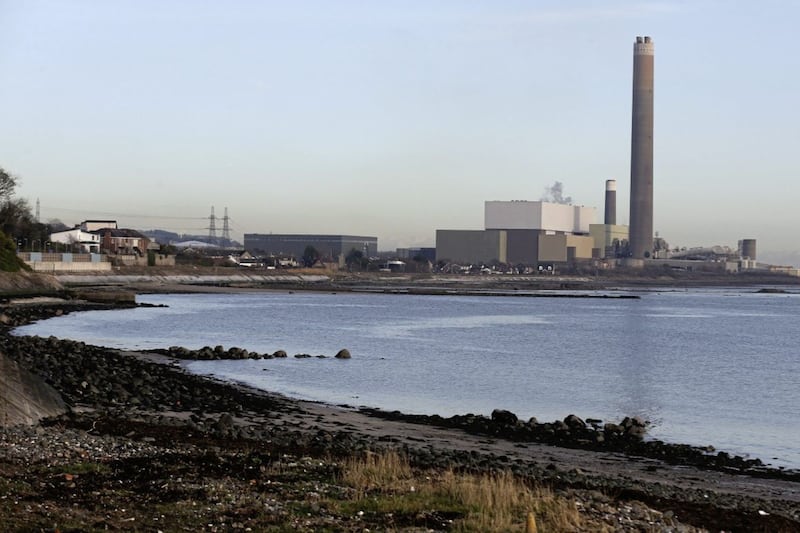GLOBALISATION is blamed for blighting jobs and credited with creating them. Workers are wary but the bosses are bullish. What everyone agrees is that the process is inevitable. There’s simply no way the trend can be reversed. You might as well try and turn back the waves. But maybe, just maybe, the accepted wisdom is wrong.
It’s suggested the latest victim of globalisation is the Schlumberger factory in Newtownabbey which appears poised to shut down with the loss of more than 200 jobs. The union Unite suspects the parent company are trying to use the downturn in the worldwide oil supplies business as cover for transferring work to low cost locations. Schlumberger say they haven’t decided to move operations out of Belfast but it is an option. However, the company maintains consolidation of manufacturing will be based on many criteria, not just on labour costs.
Whether Unite is right or not, its narrative fits a pattern which has been seen repeatedly in recent decades. Companies under pressure to keep costs down transfer jobs to Eastern Europe or to east Asia. Some simply close down because their output can’t compete in a global market.
In Northern Ireland, the classic example has been the clothing industry. When the tariffs keeping out foreign production were cut, cheap imports flooded the country putting factory after factory out of business. Effectively it meant a switch of employment from here to the Far East.
Other firms have tried to get ahead of the game and have moved production abroad to cut costs before they succumbed to globalisation. Offshoring as it’s now called, however, has to share space in the business lexicon with a new term; it’s called reshoring. That’s moving jobs back home. It’s beginning to happen for a range of reasons and may prove a far bigger phenomenon than people realise.
One of the factors that has driven globalisation has been the revolution in shipping goods long distances. Containerisation has proved to be an efficient method for moving large quantities of merchandise. You just put your products in a big metal box, seal it up and a few weeks later, it arrives for delivery in a port thousands of miles away. The process is highly automated which helps to keep a lid on costs.
This somewhat mundane innovation has underpinned an enormous increase in worldwide trade. When a count was carried out five years ago, it was reckoned there were 32 million containers in use across the world. They often travel on huge ships. One of the biggest, the appropriately named CSCL Globe can carry 19,000 standard sized containers or TEUs. Despite their size, these giant vessels may operate with as few as 30 crew.
It’s hard to predict the trend in the cost of containerisation, but it stands to reason that the ships can’t get much bigger nor the crews much smaller. Efficiency gains must run up against a ceiling. At the same time port charges and energy costs are not likely to reduce. More than that world shipping has yet to respond satisfactorily to the challenge of climate change. It’s estimated by one energy website Climate Home News that international shipping generates as much carbon dioxide as the whole of Germany.
Unlike Germany though, ships can’t easily sprout massive wind turbines or acres of solar panels to reduce their carbon footprint. Reform will have to come and it will do so at a price. Moving things around the world will start to cost more.
There are other reasons why companies will bring production back home or not offshore it in the first place. A recent book by Cambridge University academic Dr Finbarr Livesey 'From Global to Local' relays stories of how firms are finding out the benefits of making at home.
One striking example is General Electric, which discovered it could build a better water heater at a site in Kentucky for 20 per cent less than the one it had been making in China. Having shut factories in England and Wales about a decade ago, fashion firm Burberry has decided in the last few years to invest £50 million in a factory in the UK.
In the US, the Reshoring Initiative whose aim is to bring good quality manufacturing jobs back home, claims that the country has turned the tide on offshoring with more new manufacturing work now coming to the US than leaving the country.
Robots, automation generally, as well as 3D printing, may well destroy jobs in manufacturing. But they also under-cut the case for outsourcing to countries where labour costs are low. When investment in machines outweighs wage costs by a huge factor, there’s simply no economic sense in trying to save a few extra pounds by outsourcing to China. In any case, as salaries inevitably rise in the Far East, the benefit of offshoring simply melts away.
Current thinking is that globalisation is coming under threat but the forces which are feared are protectionism and economic nationalism. I suspect in the end there’ll be more talk from politicians on erecting trade barriers than action.
The real constraints on further globalisation will arise out of advances in technology and a better understanding of the advantages of making things near where you sell them. Huge container ships will still ply the seas but don’t be surprised if we see fewer of them in the years to come.
:: Jamie Delargy (delargyco@btinternet.com) is a freelance business broadcaster and commentator.








